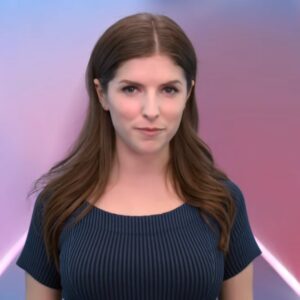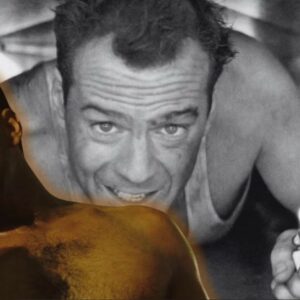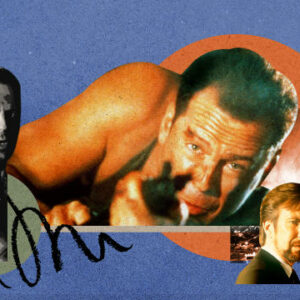From Wizard to Icon
Daniel Radcliffe’s ascent to cultural icon status is a tale of remarkable evolution and reinvention. Best known for his portrayal of the iconic Harry Potter, Radcliffe’s journey from a child actor to a significant figure in contemporary culture underscores his impact on trends and societal norms. His role as Harry Potter was not merely a performance; it was a defining moment in cinematic history that set a new standard for young actors.
The “Harry Potter” series, beginning with “Harry Potter and the Philosopher’s Stone” (or “Sorcerer’s Stone” in the U.S.), introduced audiences to a world of magic and adventure through the eyes of a young wizard. Radcliffe’s portrayal of Harry was marked by a blend of vulnerability, courage, and resilience. His ability to convey the character’s internal struggles and growth resonated deeply with audiences, making Harry Potter a symbol of bravery and perseverance.
Radcliffe’s role in the “Harry Potter” series established him as a household name, but it also presented him with the challenge of avoiding typecasting. As the final film of the series, “Harry Potter and the Deathly Hallows – Part 2,” premiered in 2011, Radcliffe faced the task of carving out a new identity beyond the boy wizard. This transition was crucial for his career, and it set the stage for his evolution into a cultural icon.
Diverse Roles and Artistic Evolution
In the years following “Harry Potter,” Daniel Radcliffe made a conscious decision to explore a wide range of genres and roles. This strategic choice was driven by his desire to showcase his versatility and challenge the conventional expectations placed on him. His post-Potter career is marked by a series of diverse and unconventional roles that highlight his artistic growth and willingness to experiment.
One of Radcliffe’s notable departures from his iconic role was his performance in the horror film “The Woman in Black” (2012). In this atmospheric ghost story, Radcliffe took on the role of Arthur Kipps, a widowed lawyer who encounters supernatural occurrences while settling an estate. The film showcased Radcliffe’s ability to carry a dramatic narrative and build suspense, demonstrating his proficiency in a genre far removed from fantasy.
Radcliffe continued to push boundaries with his role in “Swiss Army Man” (2016), a film that garnered both acclaim and controversy. In this dark comedy, Radcliffe played Manny, a corpse with extraordinary abilities. The film’s surreal and unconventional narrative allowed Radcliffe to explore themes of friendship and self-discovery in a manner that was both poignant and absurd. His willingness to embrace such a unique role highlighted his commitment to challenging traditional cinematic norms.
Another significant role in Radcliffe’s career was his portrayal of a neo-Nazi skinhead in “Imperium” (2016). This intense drama, based on true events, required Radcliffe to delve into the world of extremism and undercover operations. His performance as Nate Foster, an FBI agent who infiltrates a white supremacist group, was both compelling and transformative, showcasing his ability to tackle complex and provocative subjects.
Through these roles and more, Radcliffe’s artistic evolution reflects his dedication to exploring diverse genres and characters. His career choices have demonstrated a clear intention to avoid being pigeonholed and to continually push the boundaries of his craft. This commitment to versatility has influenced the way audiences perceive and appreciate genre diversity in film.
Cultural Impact and Trendsetting
Daniel Radcliffe’s influence extends beyond his filmography. His personal style, public statements, and advocacy work have significantly contributed to his status as a cultural icon. Radcliffe’s fashion choices often reflect a blend of sophistication and individuality, breaking conventional norms and establishing new trends in celebrity style.
Radcliffe’s public persona is characterized by a sense of authenticity and openness. He has used his platform to address important issues, such as mental health and personal struggles, in a candid and meaningful way. His willingness to share his experiences has contributed to a broader cultural dialogue, encouraging openness and understanding in areas that are often stigmatized.
For example, Radcliffe has been open about his struggles with anxiety and depression, using his experiences to raise awareness and promote mental health advocacy. His willingness to discuss these topics publicly has helped to challenge the stigma surrounding mental health issues and has encouraged others to seek help and support.
Additionally, Radcliffe’s involvement in various philanthropic efforts and advocacy work has further cemented his status as a cultural icon. He has supported causes such as LGBTQ+ rights, gender equality, and education, demonstrating his commitment to social justice and positive change. His advocacy work has not only highlighted important issues but has also influenced public perceptions and attitudes toward these causes.
Redefining Masculinity
In an era where traditional notions of masculinity are being challenged, Daniel Radcliffe has emerged as a role model for redefining what it means to be a man in the public eye. His rejection of stereotypical masculine roles and his candidness about his vulnerabilities have paved the way for a more nuanced and inclusive view of masculinity.
Radcliffe’s career choices reflect a deliberate effort to subvert traditional expectations of masculinity. By embracing roles that defy conventional gender norms and exploring themes of vulnerability and emotional complexity, Radcliffe has contributed to a broader redefinition of what it means to be a man.
For example, his role in “Swiss Army Man,” where he plays a character who is literally a corpse, challenges traditional notions of masculinity by presenting a male protagonist who is both physically and emotionally vulnerable. The film’s exploration of friendship and self-discovery highlights a more nuanced and empathetic portrayal of male experiences, diverging from traditional heroic archetypes.
Radcliffe’s openness about his personal struggles and mental health has also played a significant role in redefining masculinity. His candid discussions about anxiety, depression, and self-doubt challenge the stoic and emotionally restrained ideals of traditional masculinity. By sharing his vulnerabilities and seeking help, Radcliffe has encouraged a more authentic and inclusive representation of men in the public eye.
Moreover, Radcliffe’s public persona reflects a commitment to breaking down gender stereotypes and promoting a more diverse and inclusive understanding of masculinity. His fashion choices, personal style, and public statements often defy conventional gender norms, showcasing a blend of sophistication and individuality that challenges traditional expectations.
The Legacy of Daniel Radcliffe
As Daniel Radcliffe continues to evolve as an artist and public figure, his impact on trends and societal norms remains significant. His journey from child star to cultural icon is a testament to his dedication, versatility, and willingness to challenge conventions. Through his diverse roles, personal style, and advocacy work, Radcliffe has shaped the cultural landscape and influenced public perceptions of masculinity, mental health, and artistic expression.
Radcliffe’s career serves as a reminder that cultural icons are not defined solely by their early successes but by their ability to reinvent themselves and push boundaries. His influence extends beyond the realm of entertainment, contributing to a broader cultural dialogue and inspiring change in societal attitudes and norms.
As we look to the future, Daniel Radcliffe’s legacy as a cultural icon will likely continue to evolve. His commitment to challenging conventions, exploring diverse roles, and advocating for important causes ensures that his impact on trends and societal norms will remain profound. Whether through his performances on screen, his public statements, or his advocacy work, Radcliffe’s journey reflects a broader cultural shift toward authenticity, inclusivity, and the celebration of individuality.





